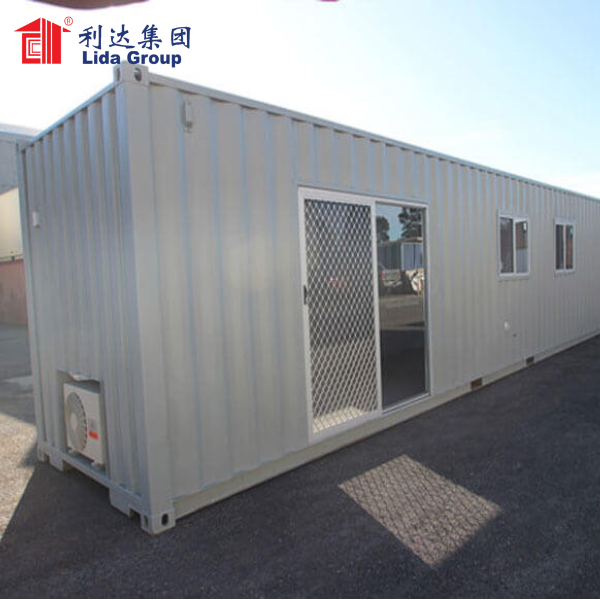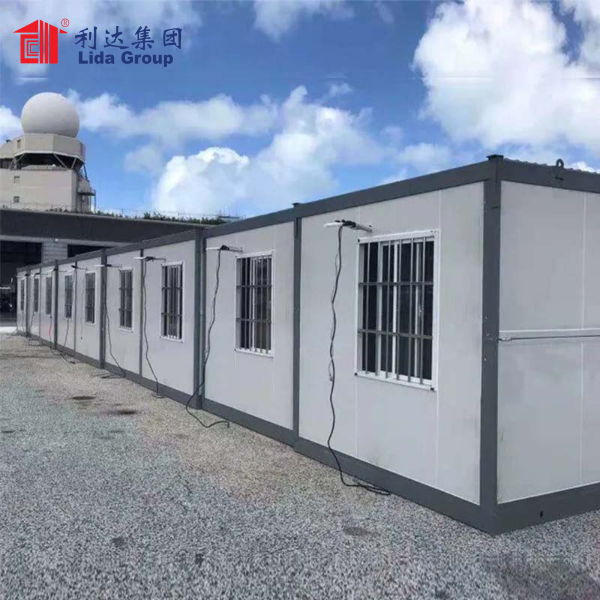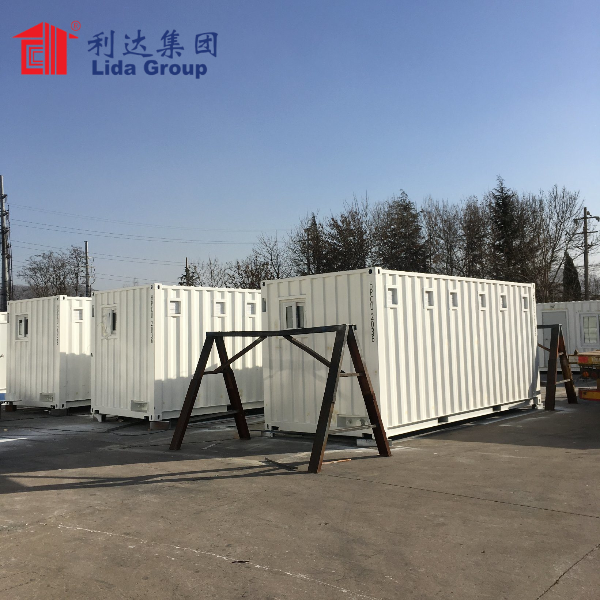Introduction:
In the realm of architecture and design, sustainability has become a driving force in shaping the way we construct and inhabit our built environments. Lida Group, a leading provider of modular construction solutions, has embraced this movement by introducing container buildings that combine modern architecture with sustainable principles. These innovative structures, crafted from repurposed shipping containers, offer a unique blend of contemporary design, environmental responsibility, and functional versatility. In this article, we will delve into Lida Group’s container buildings, exploring their features, benefits, customization options, and the positive impact they have on both individuals and the environment.
- Understanding Container Buildings:
1.1 Definition and Concept:
- Container buildings are architectural structures created by transforming shipping containers into habitable spaces.
- Lida Group’s container buildings take the concept of repurposing to new heights, reimagining these containers as sustainable and aesthetically pleasing structures.
- By utilizing existing shipping containers, Lida Group promotes resource conservation and reduces construction waste.
1.2 Advantages of Container Buildings for Sustainable Architecture:
- Environmental Sustainability: Container buildings contribute to sustainable architecture by repurposing materials that would otherwise go to waste.
- Efficient Use of Resources: These buildings minimize the consumption of new construction materials, conserving natural resources and reducing the carbon footprint associated with traditional construction methods.
- Flexibility and Adaptability: Container house offer versatility and adaptability, allowing for easy expansion, relocation, and modification to suit evolving needs.
- Reduced Construction Time: The modular nature of container buildings enables faster construction, reducing the overall time and energy required for completion.
- Cost-effectiveness: Container buildings can provide a more affordable alternative to traditional construction, making sustainable architecture more accessible to a wider range of individuals and organizations.
- Features of Lida Group’s Container Buildings:
2.1 Architectural Design and Aesthetics:
- Lida Group’s container buildings showcase modern architectural design principles, incorporating sleek lines, clean finishes, and innovative spatial configurations.
- The exterior facades can be customized with various cladding materials, colors, and textures, allowing for a visually appealing and harmonious integration with the surrounding environment.
2.2 Structural Integrity and Safety:
- Lida Group ensures the structural integrity and safety of their container buildings by utilizing high-quality shipping containers that meet industry standards.
- Structural modifications, such as reinforcement and insulation, are implemented to enhance durability, stability, and occupant safety.
2.3 Energy Efficiency and Renewable Energy Integration:
- Lida Group’s container buildings are designed with energy efficiency in mind.
- Insulation materials, energy-efficient windows, and doors help regulate indoor temperatures, reducing reliance on heating and cooling systems.
- Integration of renewable energy sources, such as solar panels, further enhances energy efficiency and reduces dependency on non-renewable energy.
2.4 Interior Design and Comfort:
- Lida Group prioritizes interior comfort and functionality in their container buildings.
- The interior spaces can be customized to include various rooms and amenities, such as bedrooms, bathrooms, kitchens, and living areas, ensuring a comfortable and livable environment.
- Thoughtful design considerations, including lighting, ventilation, and acoustics, are implemented to create a pleasant and inviting atmosphere.
2.5 Sustainable Features:
- Lida Group’s container buildings incorporate sustainable features that promote eco-friendly practices.
- These features may include rainwater harvesting systems, greywater recycling, energy-efficient appliances, and LED lighting, reducing the buildings’ environmental impact and resource consumption.
- Advantages of Lida Group’s Container Buildings for Sustainable Architecture:
3.1 Environmental Impact:
- Lida Group’s container buildings contribute to a reduced environmental impact by repurposing shipping containers and minimizing the use of new construction materials.
- Recycling and reusing these containers significantly reduce waste generation, aligning with the principles of a circular economy.
3.2 Energy Efficiency and Resource Conservation:
- Container buildings are designed to be energy-efficient, incorporating insulation and renewable energy sources to reduce energy consumption and reliance on non-renewable energy.
- By repurposing shipping containers, the demand for virgin materials is reduced, conserving natural resources and minimizing environmental degradation associated with traditional construction practices.
3.3 Design Flexibility and Adaptability:
- Container buildings offer design flexibility and adaptability, allowing for easy customization, expansion, and relocation.
- This flexibility supports sustainable architecture by accommodating changing needs and reducing the need for new construction, minimizing environmental impact.
3.4 Cost-effectiveness and Affordability:
- Container buildings provide a cost-effective solution for sustainable architecture, offering a more affordable alternative to traditional construction.
- The use of repurposed shipping containers reduces material and labor costs, making sustainable architecture more accessible to a broader range of individuals and organizations.
3.5 Promoting Innovation and Collaboration:
- Lida Group‘s container buildings stimulate innovation and collaboration within the architectural and design community.
- These structures challenge traditional notions of construction and inspire architects to explore new possibilities for sustainable and functional design.
- Case Studies and Success Stories:
- Highlight real-life examples ofindividuals or organizations that have embraced Lida Group’s container buildings for sustainable architecture.
- Discuss their motivations for choosing container buildings and the positive impact they have experienced in terms of sustainability, aesthetics, and functionality.
- Showcase how these buildings have become architectural landmarks, contributing to sustainable urban development and community revitalization.
- The Future of Sustainable Architecture with Container Buildings:
- Discuss emerging trends and future possibilities for sustainable architecture with container buildings, including advancements in technology and design innovation.
- Explore the potential for container buildings to address pressing global challenges such as affordable housing, disaster relief, and urban densification.
- Highlight the role of container buildings in fostering resilient and sustainable cities, promoting community engagement, and driving positive social and environmental change.
Conclusion:
Lida Group’s container buildings represent a harmonious union of modern architecture and sustainability. By repurposing shipping containers, these structures offer a sustainable alternative to traditional construction while embodying contemporary design principles. Featuring customizable aesthetics, structural integrity, energy efficiency, and interior comfort, Lida Group’s container buildings demonstrate that sustainable architecture can be both visually striking and environmentally responsible. With their ability to reduce waste, conserve resources, and provide cost-effective solutions, these buildings pave the way for a more sustainable future. As the demand for sustainable architecture continues to grow, Lida Group’s container buildings serve as a testament to the power of innovation and collaboration in shaping the built environment. By embracing container buildings, individuals, communities, and organizations can contribute to a more sustainable and resilient world, where modern architecture and environmental responsibility go hand in hand.
Post time: Aug-31-2023



